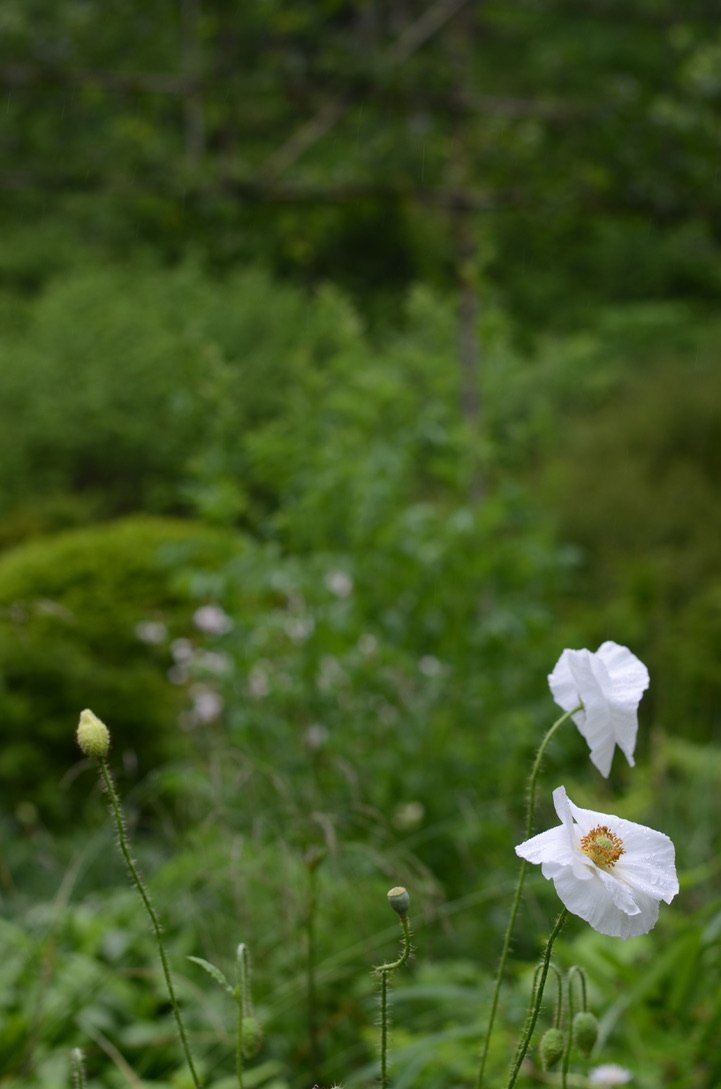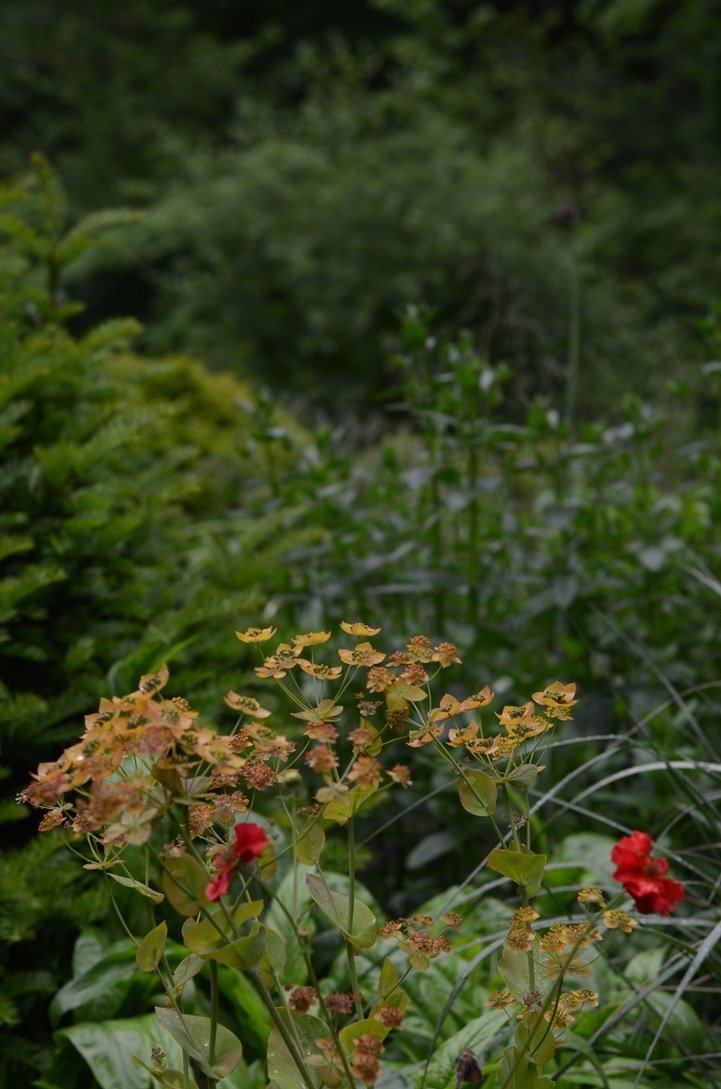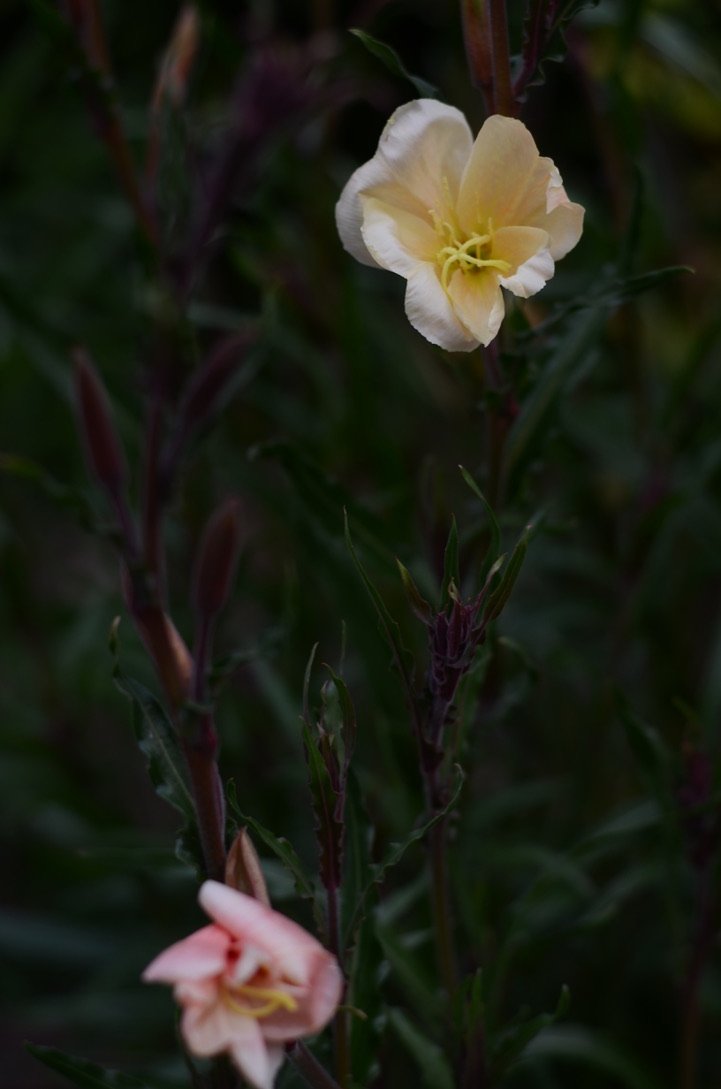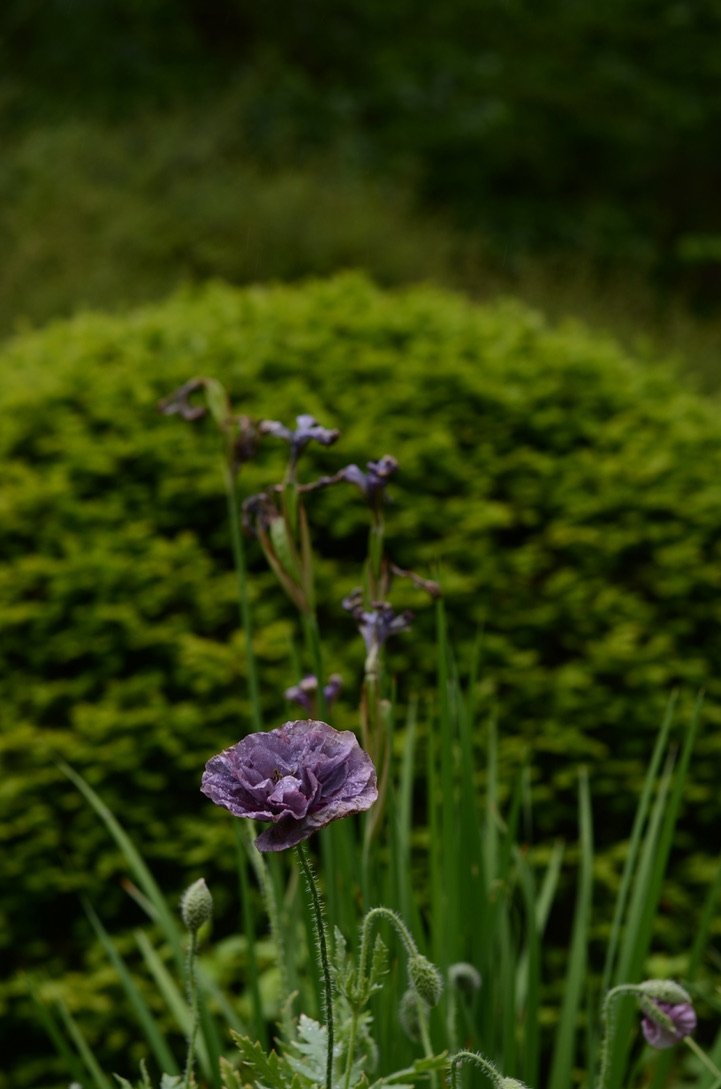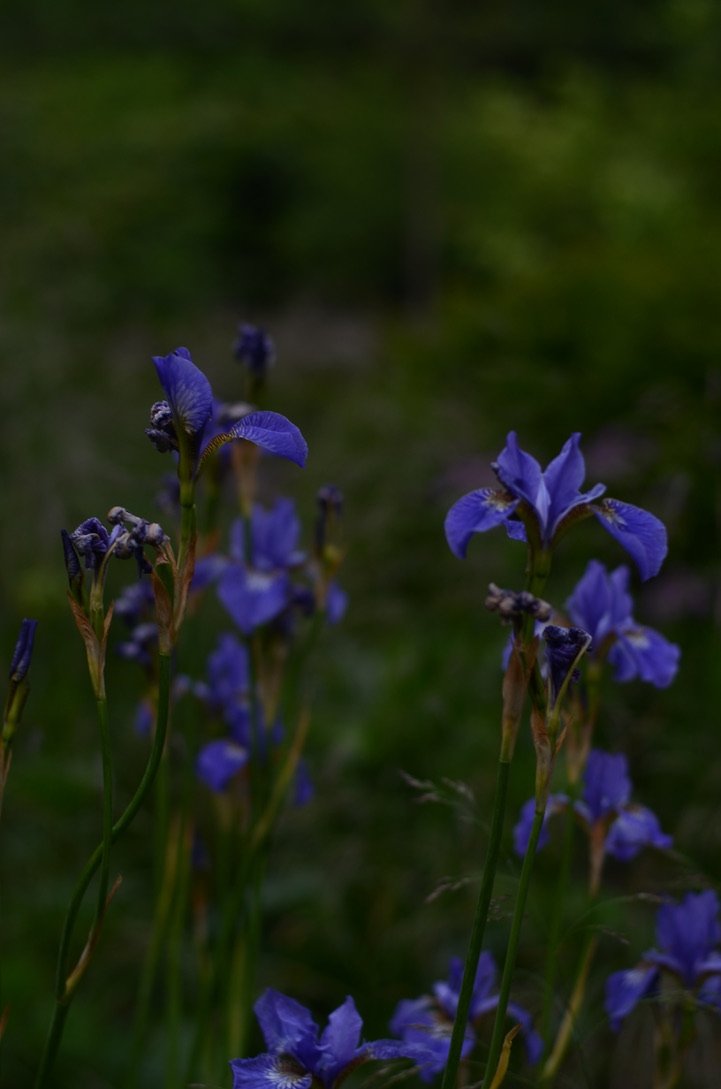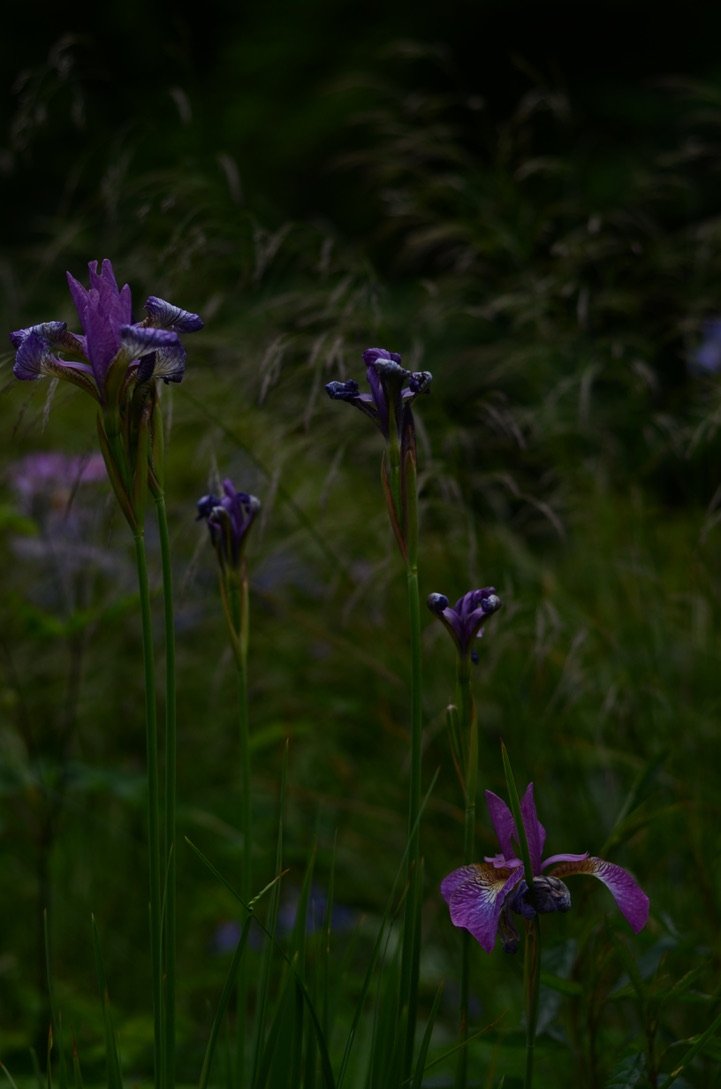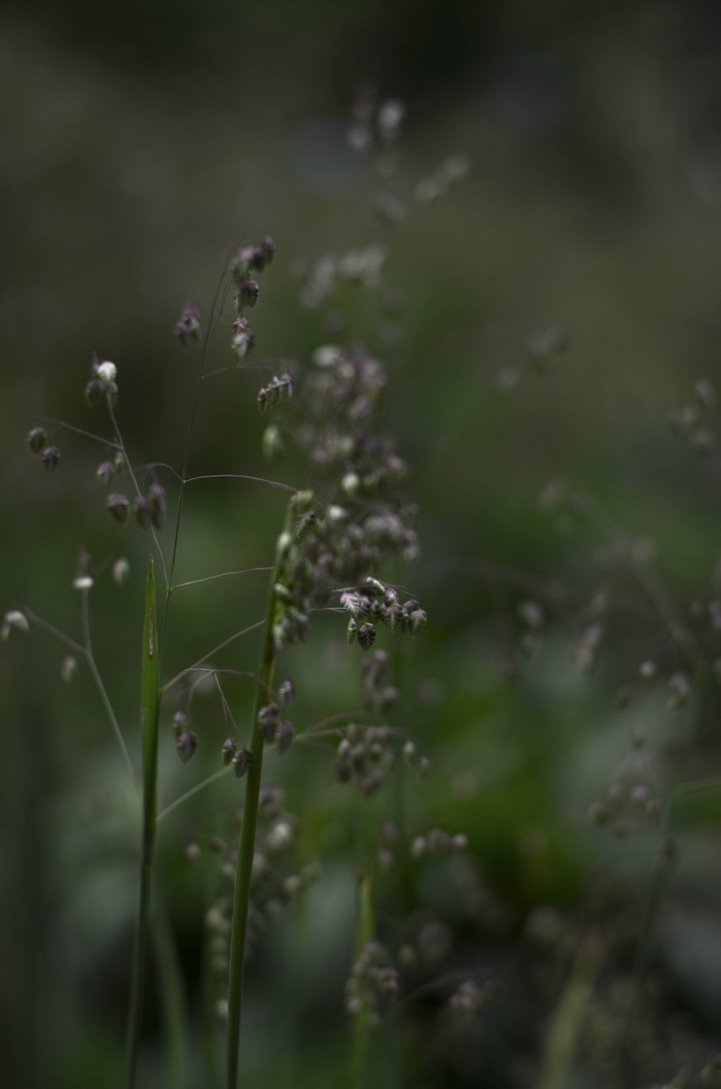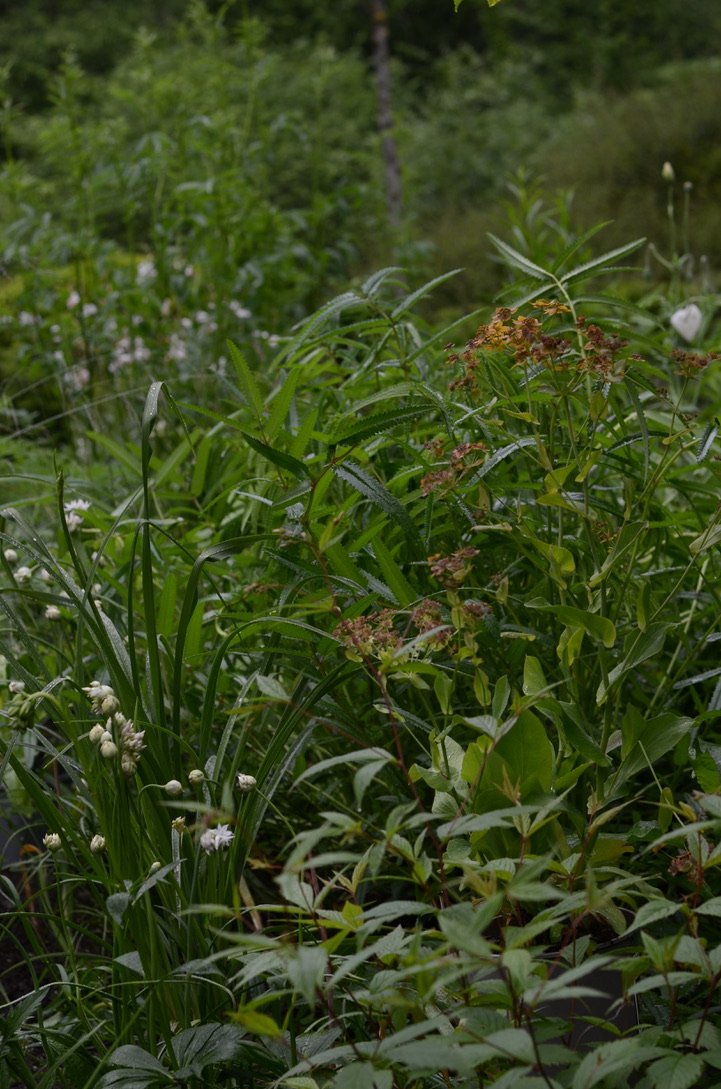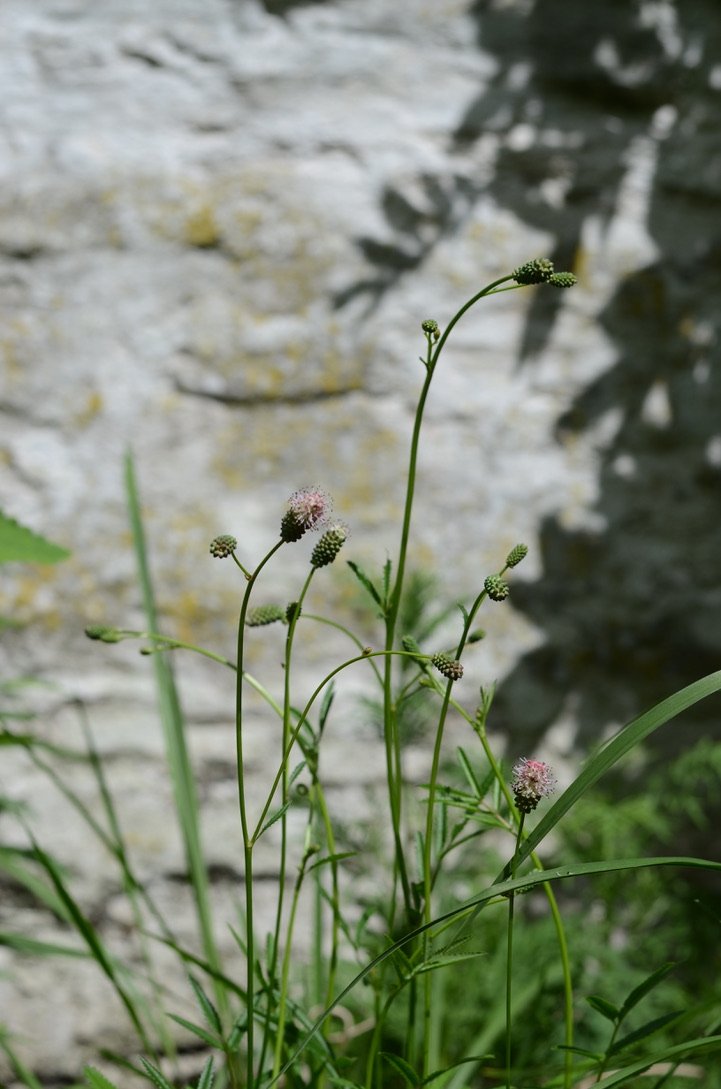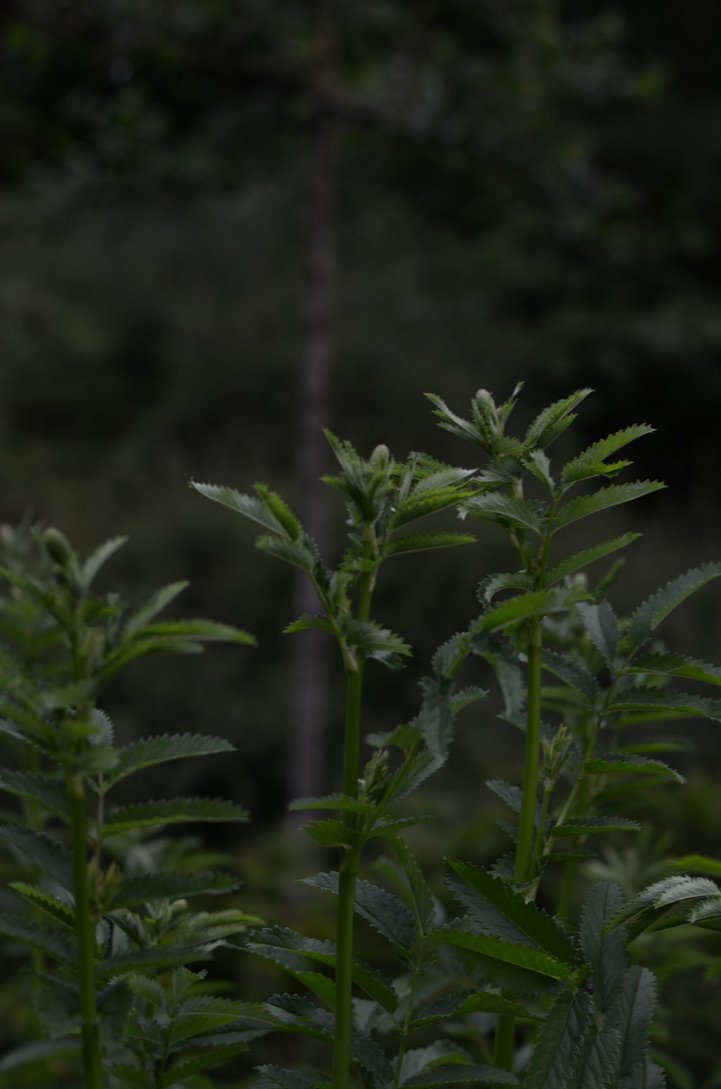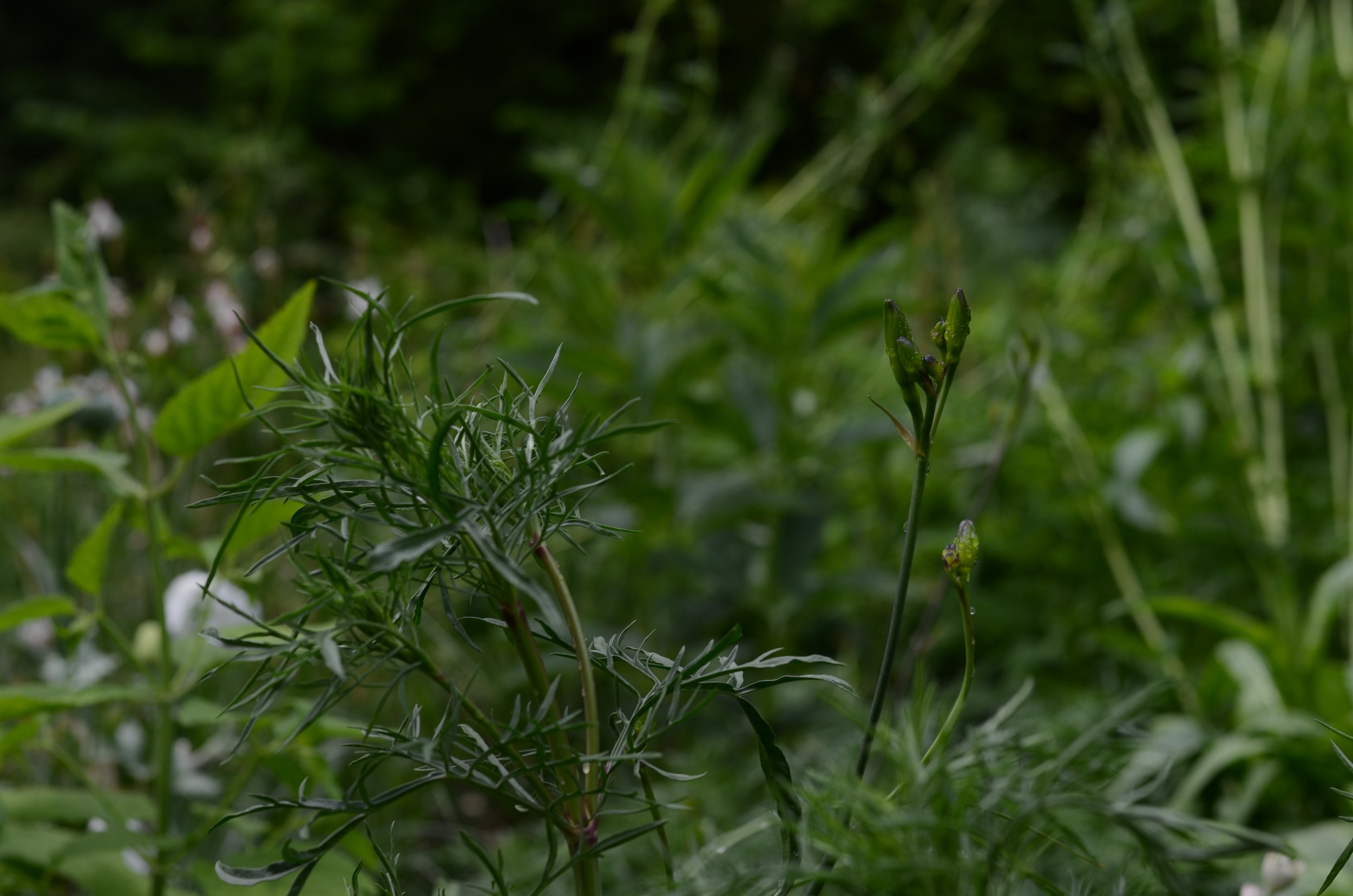the ornamental garden

Since April we have been watching the planting with eager eyes, the scheme slowly developing to offer an insight of what’s to come. As the season pushes into Summer the plants begin to show their nature. Currently the Deschampsia Cespitosa has risen tall, it’s veil like subtlety allowing the flowers of the Iris, Thalictrum and Knatia to dance amongst the downiness of its Billowing Spikelets. A tonal combination that sits so comfortably together and now as the Iris’s fade the Nepeta nuda ‘romany dusk’ begins to reveal its upright spikes of pale lilac that will comfortably combine with the tones that surround it as the season continues.
We have chosen two varieties of Siberian Iris that are scatted throughout the furthest planting bed, Iris ‘sparkiling rose’ and Iris ‘Papillion’. Their petals exhibiting a myriad of colours and a combination we wouldn’t be without. We made the decision to leave out Iris’s from the planting bed closest to the seating area and soon realised that we would need to gently edit the scheme to incorporate some more interest that would follow the Camassias. The introduction of a Paeonia 'Late Windflower' and a handful of Anthericum liliago 'Major' and Digitalis lutea will hopefully provide the scheme with this impact. But perhaps a few iris sibirica 'white swirl' would complement the continuation of the whites and yellows that would soon follow. A thought for now.
Iris papillon - June 4th
Echinops bannaticus 'taplow blue' - June 17th
As we enter mid June there is a certain energy that runs throughout the beds. The Fillipendula, Veronicastrums, Actea and Echinops in the back of the boarders are starting to make themselves known and we can already see the rhythm they will provide. Most were planted as 9cm’s so will need time to fill out and start making the impact we first imagined, but at a glance you can catch the flowers as they start to emerge.
Scabiosa columbaria subsp. ochroleuca with Hemerocallis lilioasphodelus
The Hemerocallis lilioasphodelus is currently tight in bud, readying its self to disclose its fragrant, lily-shaped yellow flowers that will connect with the Hemerocallis altissima that we have positioned near to the back of the border, the idea of drawing your eye through the planting and creating a kinship that makes them a perfect match. The H. altissima growing upwards of 1.5m makes it a notable addition to the back of a border and we are looking forward to seeing its nature later in the season if it decides to flower this year. The nepeta govaniana and Scabiosa ochroleuca will provide paler tones of yellow that will sit besides the Hemerocallis, all of which are showing suggestions of opening any time now. I feel as i look over the planting each evening there will be a moment when it all erupts, and this feels imminent.
Lilium ‘pink morning’ and Oenothera stricta ‘Sulphurea’
At the end of May the Oenothera stricta ‘Sulphurea’ revealed its first flowers. It had been sitting upright and ladened with dark bud for some time, awaiting its moment to fill the warm air with its delicate scent and informal nature. Although this variety is reasonably upright the odd stem wanders into the pathway, an invitation to stop and take in its beauty. It is a plant that offers so much. Tonally it is exquisite, at all stages. The pale yellow blooms maturing to a peachy shade as it slowly withers and droops, ready to be removed before the next flourish begins throughout the Summer months.
The Lilium martagon ‘pink morning’ has been just as attractive in bud as it is now that the first of the flowers have announced their attendance within the beds, and one positioned behind the Oenothera forms a harmonious combination that will only be enhanced as the racemes of nodding, spotted, pale pink flowers hang behind its peachy blooms.
Lilium martagon ‘pink morning’, Selinum wallichianum and Digitalis ferruginea
The hard landscaping was put on hold last year to allow us to complete the planting of the beds by Winter. For the time being the paths and seating areas will remain as sub-base until time allows us to develop it, though of recent we have become excited at the flexibility this has provided and have begun to plant up the less traveled spaces. It allows us the opportunity to use a different palette of plants and slowly build up a conversation with the larger planting beds. It also creates an informality and romance that would be lost if we simply paved and cobbled the areas. To accompany the gravel we will be adding in areas of reclaimed paving and cobbles, close to the house, to deepen the character and carefully craft definition and structure, building a softer demeanour to this section of the garden. Thus far we have planted Melica ciliata, Dierama pulcherrimum, Dianthus deltoides 'Albus', Santolina chamaecyparissus, Oenothera stricta ‘Sulphurea’ and Thymus vulgaris to provide a base layer that we will add to over the next year or so. This Summer we are looking forward to seeing it settle, a combination of plants that will slowly encroach to provide a narrow, scented pathway full of detailed flowers and scent.
